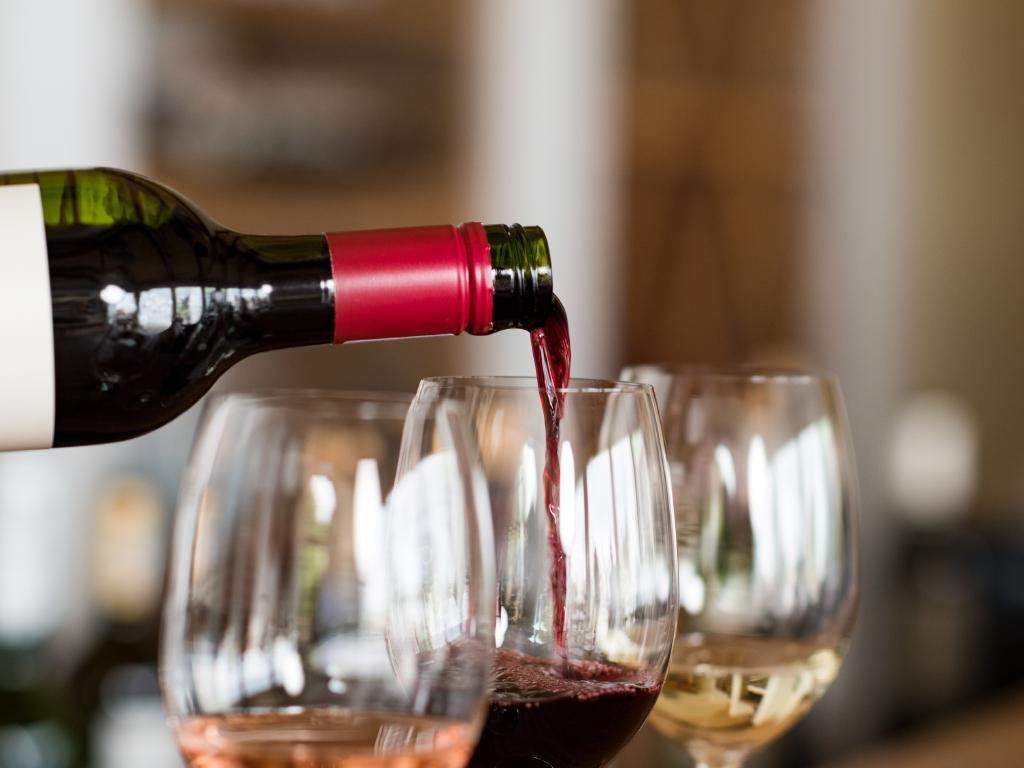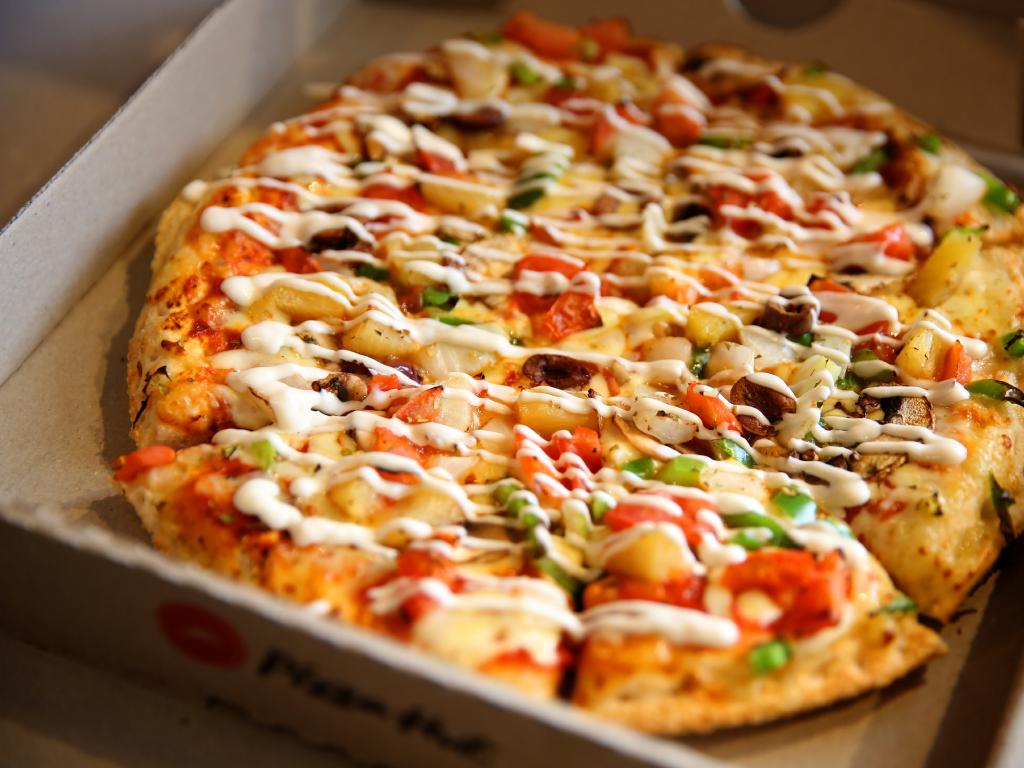
[ad_1]
DO YOU really know how to recycle?
If you’ve been throwing your wine bottles in the yellow bin with the lid still on it then you’ve been doing it wrong.
What about pizza boxes with food still in them? Wrong.
Tissue box with the plastic rim attached? Also wrong.
Why you ask? Most lids – even those of coffee cups and yoghurt containers – are generally a different kind of plastic and are processed differently (depending on your local council’s waste facility).
In other words if you leave a lid on a bottle, which is a different plastic, it can hinder the process of recycling. They can still go in your kerbside bin, but just need to be separated.
The plastic found on your tissue box is considered a soft plastic along with plastic bags, bread bags, films around bottles, straws and biscuit and confectionery packets.

Recycling that wine bottle? Be sure to separate it from the lid.
It is advised to collect these and when you’re heading to your local big-chain supermarket like Coles, put it in the REDcycle collection bin. You can also put them in your red bin at home, but the former is recommended.
People often get confused about what to do with the containers or items with food still in it, like pizza boxes or even your brown Macca’s takeaway bag.
If there’s a lot of food or grease attached to it, dump it in the red bin. You want to avoid contamination – and that’s a big deal.
“What I usually do with my pizza boxes is rip off the part with leftover toppings still stuck to it, throw it in garbage bin and the other half in recycling,” Jayne Paramor, deputy director of national environmental group, The Boomerang Alliance, told news.com.au earlier this year.
“I’d rather not compromise what goes into the recycling bin because if it is contaminated, the entire batch will be sent-off to landfill.
There is a clear list on what can and can’t be included in your yellow recycling bin.
“The vast majority of soft plastic can be recycled but we don’t have the capacity in this country to do it – it is restricted based on our recycling infrastructure,” Ms Paramor said.
Ms Paramor also advises that people should cut rings found around drink bottles in half.
“If they do escape the recycling process as a complete ring, they can harm marine like baby turtles.”
Then there’s the more obvious items that we shouldn’t be recycling like clothes and nappies as they contaminate and jam machinery.
“People think by putting their clothes in the recycling bin it will somehow make it’s way to a charity, but no, it doesn’t work like that,” Ms Paramor said.

Dirty pizza box? Rip off the part with leftover toppings still stuck to it, throw it in garbage bin and put the other half in recycling. Picture: Angelo Velardo
City of Sydney Council’s waste strategy manager Kath McLaughlin said the most common mistake their residents are making is putting all their recyclables in a plastic bag, and throwing it away, with the plastic bag, which then gets caught in the waste machines.
Plastic bags need to go to REDcyle or in your red bin if you have to.
Most people don’t give it an afterthought once dumping their recycling and while it all may sound a bit too hard, an extra few minutes spent on doing the right thing brings us one step closer to protecting our environment, Ms Paramor said.
“It really is everyone’s responsibility, from governments, to the manufacturers and retail sectors in what they’re putting on the shelves, to consumers and being conscious of what they’re purchasing and doing with their waste.”
Australia operates under a federated model and under this model responsibility for waste lies within each State Government’s jurisdiction, so keep in mind that this is a best-practise guide as rules differ for every council area depending on their waste management facility.
For more information about recycling standards contact your local council.
YES
Yoghurt tubs – Rinse it, remove lids, put in yellow bin separately.
Local papers – Only recycle the paper; plastic and rubber band goes to REDcyle.
Books/ novel – If damaged, they can be recycled but the paper must be separated from the spines and broken down into smaller pieces.
Tissue boxes – Plastic film, take to REDcycle bin; cardboard – flatten and put in the yellow bin.
Detergent box or large boxes – Must flatten if cardboard.
Staples from magazines/ paper – No need to separate.
Tim Tams – the external wrapper goes into REDcycle, the internal tray can be recycled in the yellow bin, but this may be dependent on your council; some do, some don’t, so worth checking.
McDonald’s paper bag with grease on it – If it’s a little bit of grease from your fries, put it in the yellow bin, but flatten so it’s recognisable as paper, if it’s more contaminated, in the red bin.
Detergent liquid bottle – Empty, rinse and recycle.
Shampoo/ conditioner bottle – Empty, rinse and recycle.
Bottle of wine – Separate bottle and lid.
Cask wine – Flatten and recycle in the yellow bin; internal bladder – cut off the plug and put that in the yellow bin and take the soft plastic bladder to REDcycle.
Coffee cups – Remove the lids, wash and recycle. The cup cannot be recycled due to its waterproof plastic lining so throw this part away in the red bin.
NO
Cotton handles from paper bags – If actually cotton, then compost or try to reuse – recycling facilities don’t handle textiles and things like ribbon can clog up the machines.
Used tissue – Compost or fireplace, but not recycling
Clothes, fabrics, textiles – Jam machinery and contaminate the recycling process
Nappies – Jam machinery and contaminate the recycling process. Nappy recycling services available in Australia that collect and process nappies into new materials – contact your council.
WHAT THE NUMBERS INSIDE THE TRIANGLE RECYCLE SYMBOL MEAN:
The number in the triangle identifies the type of plastic a container is made from, not whether or not it is recyclable.
#1 – PET (Polyethylene Terephthalate)
#2 – HDPE (High-Density Polyethylene)
#3 – PVC (Polyvinyl Chloride)
#4 – LDPE (Low-Density Polyethylene)
#5 – PP (Polypropylene)
#6 – PS (Polystyrene)
#7 – Other (BPA, Polycarbonate and LEXAN)
WHAT ELSE CAN YOU RECYCLE AND HOW?
Mobile phones – MobileMuster is a free mobile phone recycling scheme.
Computers and TVs – TechCollect is a free national recycling service for computers, computer accessories and TVs (e-waste) established in response to the Federal Government’s National Television and Computer Recycling Scheme (NTCRS).
Printer cartridges – Cartridges 4 Planet Ark is a free printer cartridge recycling scheme.
Paint – Paintback is a free paint recycling scheme.
Coffee capsules – Nespresso has their own free coffee capsule recycling scheme.
Matresses – Soft Landing is a paid mattress recycling scheme.
– Planet Ark’s 23rd National Recycling Week will run from 12 – 18 November. This year’s theme, From Waste War to Recycling Reboot, aims to resolve some of the confusion surrounding how to recycle right and what happens to our recycling once it has left our hands. For more information visit the website.
[ad_2]
Source link